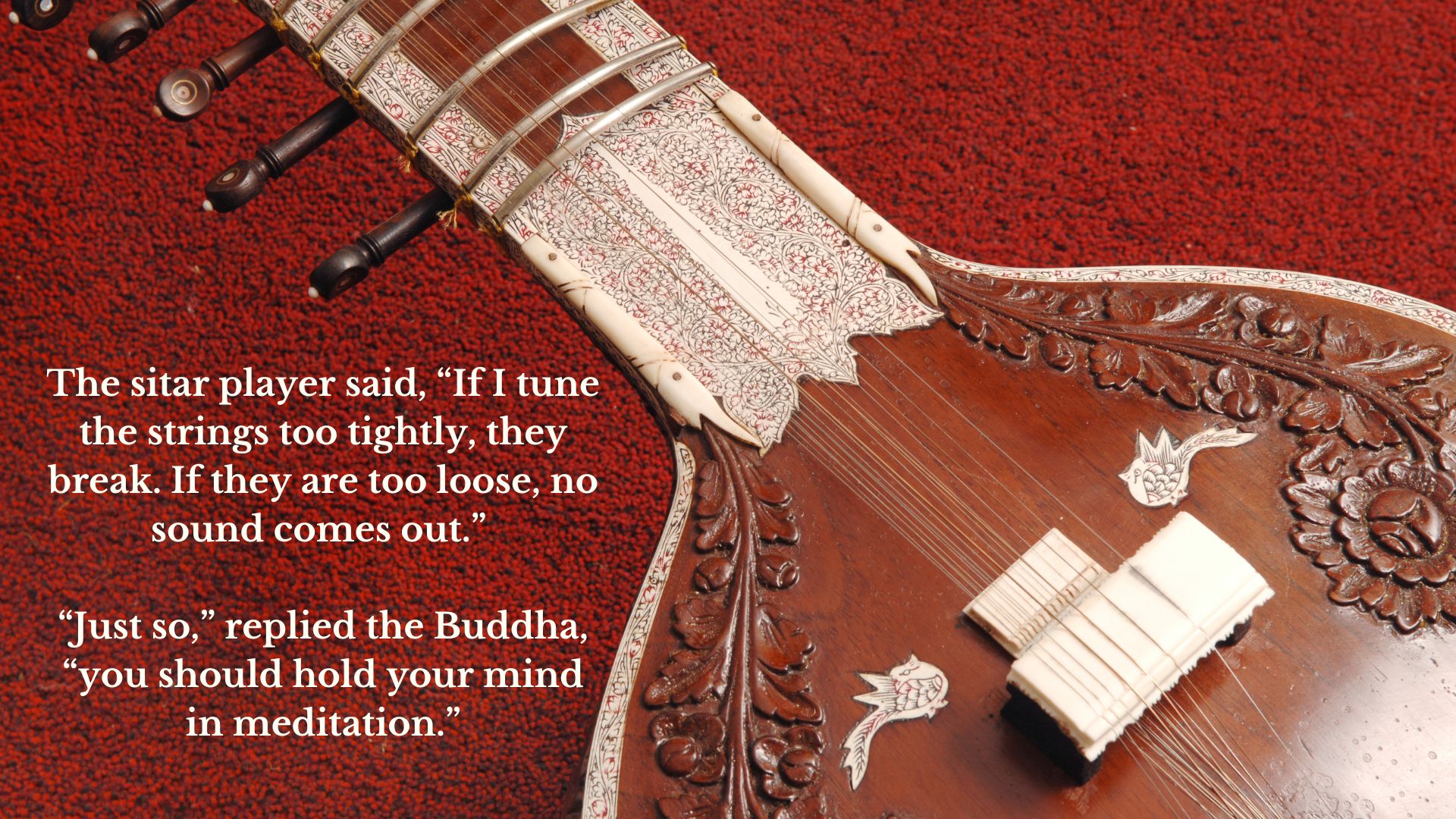What to do about “monkey mind”?
September 9, 2024 | 2 Comments
As you have learned (or will learn if this is your first time meditating), our practice requires us to be mindful of three things.
First is mindfulness of body—we hold our posture in a certain way.
Second is mindfulness of breath—we place attention on breath and, when it strays, bring it back.
Third is mindfulness of mind. But what does this mean?
Are we trying to monitor each thought and when we see one, turn away from it?
Or are we supposed to empty our minds of thought in order to meditate? (Those of you who know me know what I’m going to say—absolutely not.)
Are we supposed to quiet our minds? (Not necessary, this happens on its own when we apply the technique. No effort required.)
Are we supposed to look carefully for insight into the nature of reality—or should we just relax and let things flow and twist and turn and trust that eventually our minds will sort themselves out?
Actually, none of the above.
Most of us tend to prefer either super close examination and keeping a very tight leash on our minds OR relinquishing control and letting things sort of run amok. The first danger is mistaking vigilance for awareness. The second danger is in becoming lost in the display of thought, feeling, and sensation.
If we want our meditation practice to lead us to peace and enlightenment and happiness, what then is the middle ground?
There is a famous story about a sitar player who requested to meet with the Buddha to discuss his meditation practice. He asked him, “Should I maintain tight controls on my mind during meditation or should I let it flow?” The Buddha asked, “How do you tune your instrument?” The sitar play said, “If I tune the strings too tightly, they break. If they are too loose, no sound comes out.” “Just so,” replied the Buddha, “you should hold your mind in meditation.” Not too tight—let your thoughts be as they are, allow your mind to be at rest within its activity, feel its flow and energy—and not too loose—remember to apply the technique with a light touch to maintain an environment of order and clarity and, perhaps above all, let go and keep letting go until you even let go of letting go.
So as you go about your life today, as you look at your to-do list, listen to your child’s voice, sit down with your boss to discuss a project, or even simply leaf through a magazine, tune in every now and then to ask yourself: Where is my mind right now? Too tight (anxious, demanding, narrow)? Too loose (spacy, unfocused, dull)? Or just right, as Goldilocks might say…meaning: awake, joyous, and on the dot.
To learn more about meditation, the spiritual path, and yourself please join the Open Heart Project sangha.
categorized in: meditation, open heart project
2 Comments
Thanks for sharing. This is very helpful. One thing that seems to put me into the Goldilocks zone is reading and learning in general.
One of the things that really stood out for me over the years is how in the early days my idea of ‘not too tight, not too loose’ was so close to ‘tight’ and yet felt perfectly balanced in the middle way to me at that time!
And so how it can take time to feel your way through this. I’d say looking back that there are degrees and levels of letting go and letting be that were simply beyond my reach at that time. Too much addiction to pushing and pulling at experience to really let be.
May all beings realise their inner Goldilocks!!!